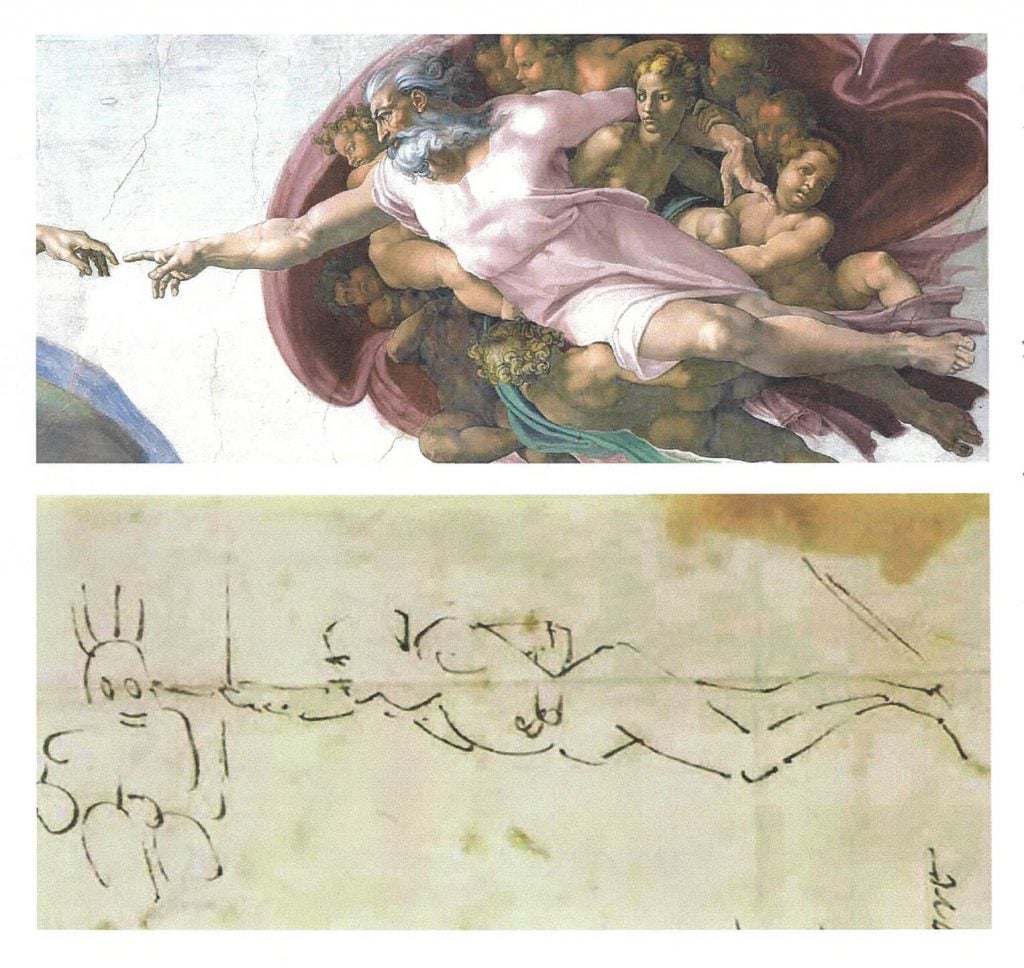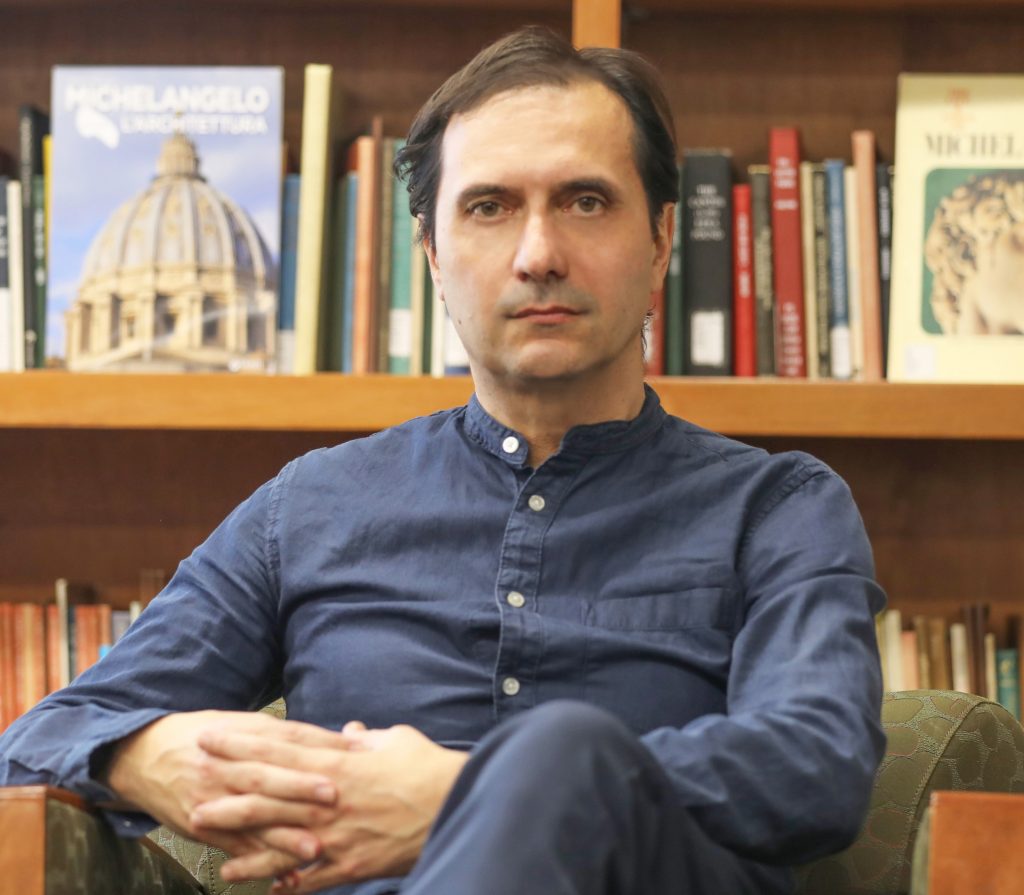In The Creation of Adam, Michelangelo’s masterpiece on the ceiling of the Sistine Chapel, God stretches out a finger to animate the world’s first man with the spark of life. What if the famous fresco was actually a self-portrait in disguise?
This is the new theory put forward by Adriano Marinazzo, an expert on the Italian artist, in a recent article published in the peer-reviewed art journal Art critic. The scholar argues that Michelangelo may have based his depiction of God on his own likeness.
At the basis of Marinazzo’s theory is a sonnet that Michelangelo wrote to his friend Giovanni da Pistoia while working on the Sistine Chapel between 1509 and 1511. In it the artist laments the consequences of the commission on his body. “My hips creak in my guts, my poor ass struggles to balance, every move I make is blind and aimless,” he wrote.
Scribbled in the margins next to the artist’s note is a drawing of a man painting a figure above him with his legs crossed below. For centuries scholars assumed it was a self-portrait of Michelangelo himself standing below the ceiling of the chapel. Marinazzo thought so too when first studying the document at Casa Buonarroti in Florence years ago.
But while preparing for a new class at William & Mary, where he teaches (and works as a curator of special projects at the school’s Muscarelle Museum of Art), the expert revisited a scanned copy of the letter in his archive. That’s when hWe notice something else: the strange posture of Michelangelo’s self-portrait reveals a surprising resemblance to that of God in The Creation of Adam.
Maybe the character wasn’t just a self-portrait, Marinazzo thought. It may also have been a preliminary sketch.

Michelangelo The Creation of Adam [top] next to the sketch he drew in a letter to his friend Giovanni da Pistoia between 1509 and 1511 [bottom]. Courtesy of Adriano Marinazzo.
“In Michelangelo’s self-portrait, his right arm is extended toward the surface of the ceiling to bring to life the stories in Michelangelo’s book. Genesis,” Marinazzo told Artnet News in an email. “The artist holds a brush that approaches the surface of the vault but does not touch it. This gesture is reminiscent of Michelangelo’s painting of the index finger of God, who gives life to Adam without touching him. Moreover, in his self-portrait, Michelangelo represented himself with his legs crossed; it’s a curious pose for someone painting on scaffolding.
The expert also pointed out that in his self-portrait the artist idealizes himself with soft strokes. “But in real life,” Marinazzo explained, “Michelangelo had rough features, characterized by a flattened nose. The profile of the artist is flawless, like that of God.
Although based on scholarship, Marinazzo acknowledged that his “hypothesis is not a black and white proposition”.
“My article wants to open a conversation,” he said.

Adriano Marinazzo at William & Mary. Courtesy of the author.
Some researchers have been more open to this conversation than others. Paul Barolsky, historian of Renaissance art at the University of Virginia, said in an interview with the wall street journal that he would need more evidence to accept Marinazzo’s idea.
“Everyone has theories, but you have to do better than that,” Barolsky said.
Marinazzo, for his part, is unfazed by the backlash; his ideas about Michelangelo have already aroused skepticism. In 2020, for example, he suggested that a small wall sculpture on the facade of the Palazzo Vecchio in Florence be actually the work of the Renaissance master.
“Michelangelo scholars are very conservative and protective of their space. It’s almost impossible to come up with radical new ideas,” Marinazzo said, noting that some scholars emailed him with “positive feedback,” but publicly dismissed the hypothesis.
“But I do[proposenewideasatleastItry”hecontinued“Studyingartissupposedtobefunandcreative”[proposerdenouvellesidéesAumoinsj’essaie»a-t-ilpoursuivi”L’étudedel’artestcenséeêtreamusanteetcréative”[proposenewideasAtleastItry”hewenton “Studyingartissupposedtobefunandcreative”
More trending stories:
Follow Artnet News on Facebook:
Want to stay one step ahead of the art world? Subscribe to our newsletter to receive breaking news, revealing interviews and incisive reviews that move the conversation forward.
